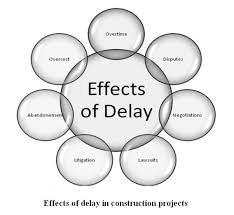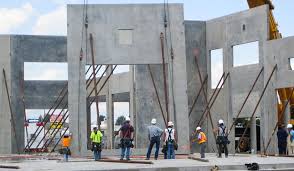
Do you ever find yourself pulled into projects with schedule specifications lacking even the most basic requirements necessary to establish a schedule development and management process which will produce acceptable results?
In a perfect world, we, as Professional Planners and Schedulers, would be involved in the schedule specification development. Unfortunately, more often than not, a schedule spec from a previous project, which was pulled from a previous project is used without much review for completeness or relevance to scheduling methodologies and software currently in use and endorsed.
Perhaps it would be easier to just insist on a few key requirements that at a minimum should always be in the schedule specifications. We could then edit and add additional requirements for each project as appropriate.
Each planning and schedule professional will have their own preferences for these basic requirements.
However, for me, the first thing I would add is the requirement for a CPM schedule.
This would list the requirement for complete logic to allow the production of a critical path for the project. In this requirement, I would also add the requirements for a restriction of activity durations and total float values to force the breakdown of work into enough detail to plan, manage and track the work. I would also severely limit the use of SS and FF relationships and positive lags for the same reason. I would not allow the use of SF relationships or negative lags.
Second, I would require the development of the schedule based on a WBS. This would help ensure the complete project scope was included in the schedule and make it easier for the owner’s review and verification.
Finally, I would only allow two activities to be constrained; all activities percent complete type set to physical; development of appropriate calendars for weather and other non-work days; and require manual updating of progress with correction of out-of-sequence relationships and any other schedule revisions done in a two-step or bifurcated update process with the submission of the update only and then the revised update as separate parts of the update package to allow owner review of actual progress and the impact of this to the existing schedule with follow-on review of plan corrections.
We could address resource, crew, cost, and activity code requirements as needed for each project. But at least we could start with the basics for schedule development and management.
This would help all of us in the industry.
What other requirements would you add as basic requirements to help with this issue? What requirements would you not include?
I’d love to hear what you think!
Please visit https://conschmanservices.com to learn more about Construction and Schedule Management Services, LLC
Please visit my LinkedIn account to learn more about me.
Please visit my “The Blue Book” ProView.
Paul Epperson CCM, PMP, PSP, PMI-SP
 When you begin the planning for your project schedule, are you defining the project scope and breaking it down into work packages? Do you ever discover that work may have been missed if you had not completed this exercise?
When you begin the planning for your project schedule, are you defining the project scope and breaking it down into work packages? Do you ever discover that work may have been missed if you had not completed this exercise? My early construction schedule experience was gained while working on the owner’s side of the project. The issues I was concerned with were simple. Is the contractor on schedule? Will the contractor finish by contract completion? Have I delayed the contractor, and if so by how much?
My early construction schedule experience was gained while working on the owner’s side of the project. The issues I was concerned with were simple. Is the contractor on schedule? Will the contractor finish by contract completion? Have I delayed the contractor, and if so by how much? As construction scheduling professionals, we’ve all worked on projects which have been impacted by an owner delay which was not recognized as valid by the owner.
As construction scheduling professionals, we’ve all worked on projects which have been impacted by an owner delay which was not recognized as valid by the owner. As construction scheduling professionals, we’ve all developed project baseline schedules. We’ve also worked with our subcontractors to get their input for the schedule, often with less than stellar results…..
As construction scheduling professionals, we’ve all developed project baseline schedules. We’ve also worked with our subcontractors to get their input for the schedule, often with less than stellar results….. As construction scheduling professionals, we’ve all worked on smaller construction projects which have fallen behind schedule almost immediately after NTP.
As construction scheduling professionals, we’ve all worked on smaller construction projects which have fallen behind schedule almost immediately after NTP. You have a
You have a  You have created your project’s
You have created your project’s 